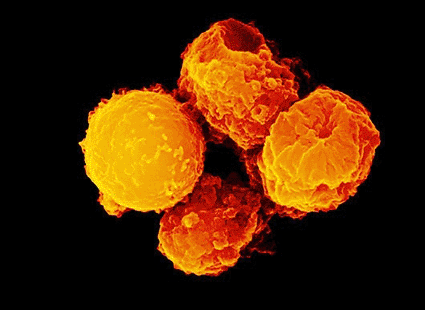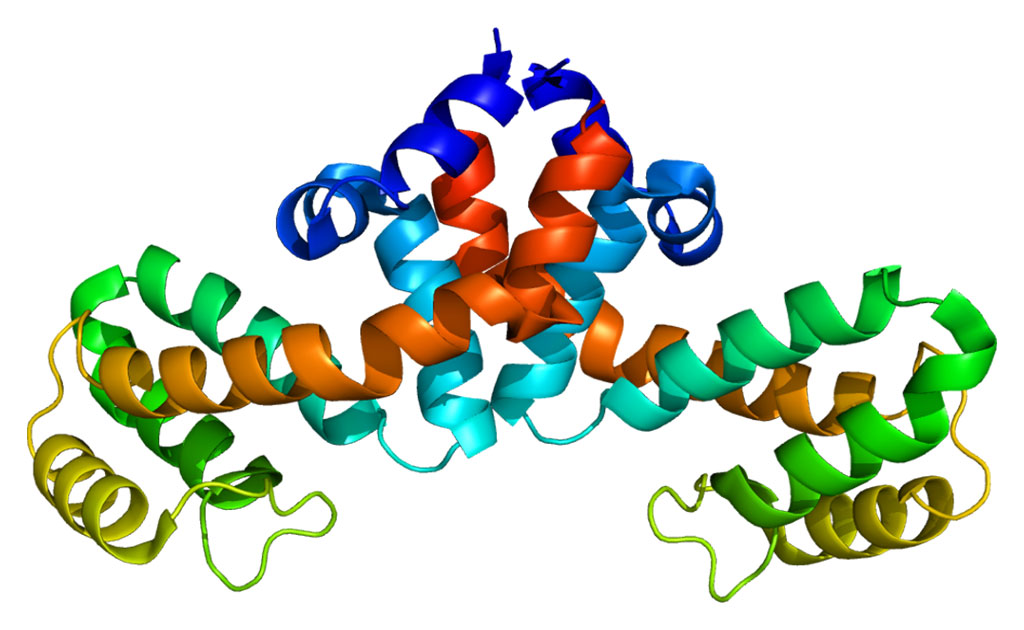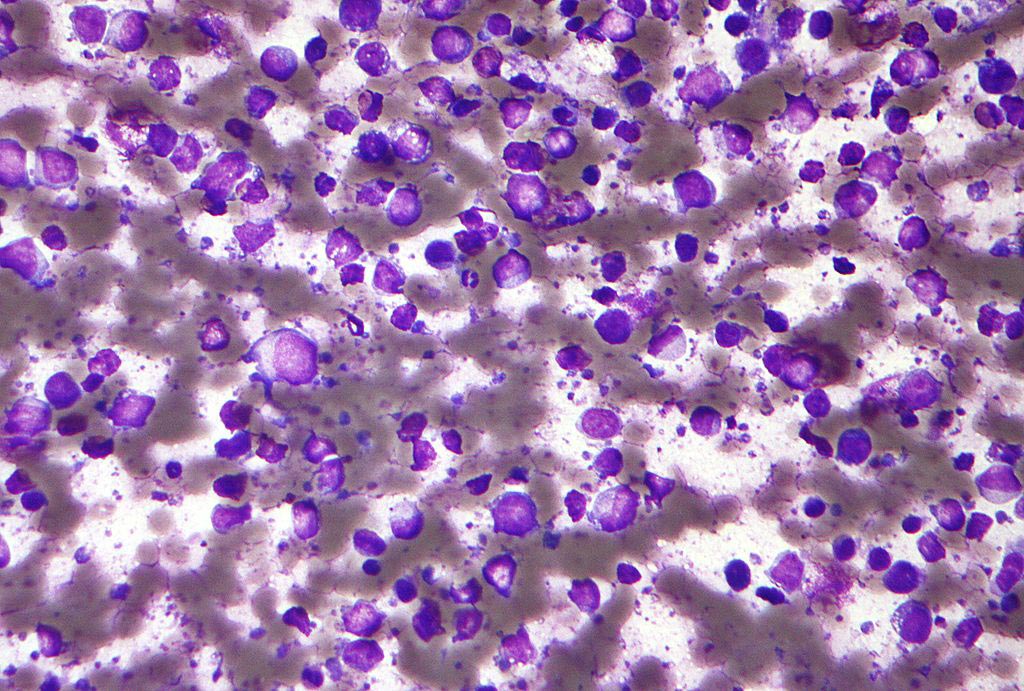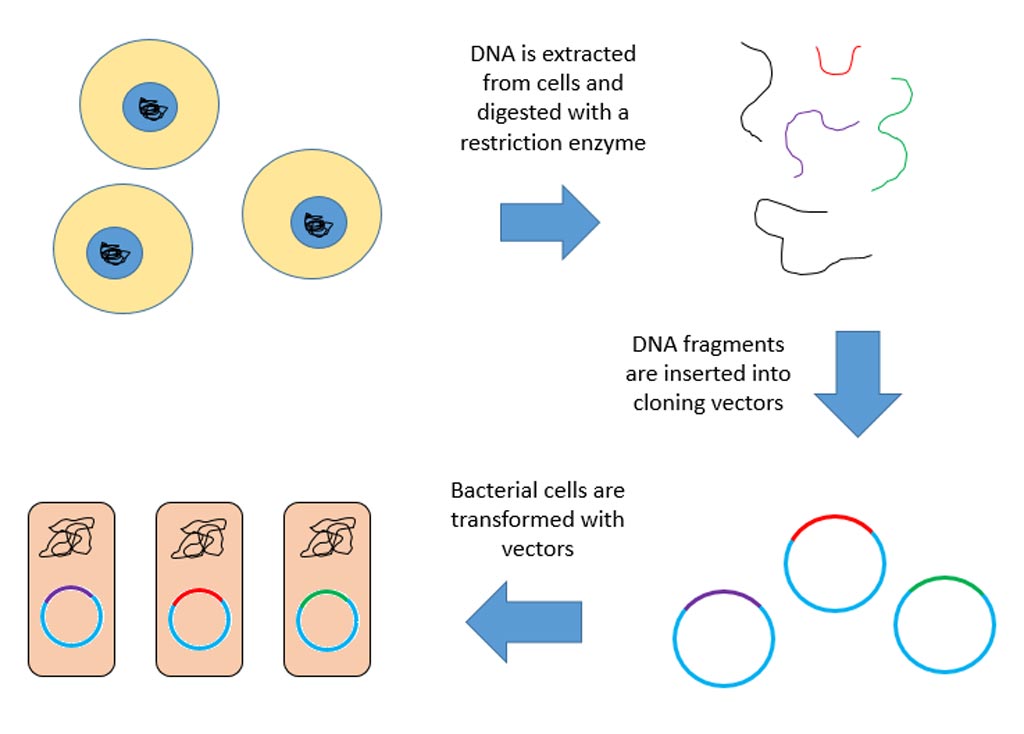Regulator of the Necroptosis Cell Death Pathway Identified
By Biotechdaily staff writers
Posted on 28 Apr 2008
Posted on 28 Apr 2008

Image: Color-enhanced scanning electron micrograph (SEM) of apoptosis or “programmed cell death” (Photo courtesy of Stem Jems).
Cells are programmed to die when they reach the end of their lifecycle, and that regulated process is called apoptosis. Cells can also be killed through pathways not controlled by apoptosis. Until recently, this type of cell death, termed necrosis, was believed to be unregulated, a type of accidental cell death caused when cells are placed under extreme stress such as during a heart attack, stroke, or organ failure. Recent studies have shown, however, that necrotic cell death (necroptosis) is regulated and has a specific biochemical pathway.
Investigators at Tufts University (Boston, MA, USA) had previously found that three small molecules, necrostatin-1, necrostatin-3, and necrostatin-5 were inhibitors of the necroptosis pathway. The purpose of the current study was to identify the molecular target for necrostatin activity.
The investigators decided to focus on the enzyme RIP1 kinase because it had been previously reported by other groups to be important for necroptosis, and necrostatin-1 looked similar to known kinase inhibitors. Results obtained from in vitro enzyme interaction studies were published in the April 13, 2008, online edition of the journal Nature Chemical Biology.
"Our research found that RIP1 kinase can be inhibited by three small molecules: necrostatin-1, -3 and -5,” said first author Dr. Alexei Degterev, assistant professor of medicine at Tufts University. "Overall, these data establish RIP1 kinase as a new target for therapeutic drug development for human diseases involving necrotic tissue injury, and they establish necrostatins as first-in-class potent and selective inhibitors of RIP1 kinase. Next, research needs to determine the cellular pathway initiated by RIP1 kinase activity, develop better tools to further investigate its role in human disease, and establish how necrostatins are able to prevent RIP1 kinase from signaling the cell to kill itself. This may one day result in effective therapies, currently not available, for many life-threatening diseases.”
Related Links:
Tufts University














